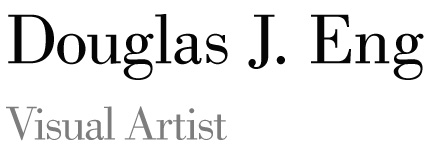Dorian and I just finished a photo tour of Tuscany and Cinque Terre. This was a wonderful way to see this very special part of Italy and I highly recommend a photo tour to anyone who hopes to make significant images while touring a country. Our trip was led by three distinguished pros, Brenda Tharp, Jed Manwearing,, and Jeremy Woodhouse. All are working pros and familiar with the area. As Jeremy put it, “you pay us to get you to the best areas to shoot and we get you there.”
My trip was unfortunately plagued by a broken/sprained foot that I literally fell into on the first day in Florence. As most of you know, I am a fairly active person, so having a foot that was in pain, swollen, and rapidly turning purple, put a crimp in my normal relentless style. The cobblestone streets and hilly terrain did not do much to make things easier, Tomorrow I will be going for some x-rays to see what kind of damage is going on down there, as I am still limping around. In addition, the previous week I had traveled to Grand Rapids and my previous cold/flu seemed to rebound again, so I was on medication, coughing and blowing my nose. So essentially I was a physical wreck going on 4 hours of sleep.
A typical day was up at 4:45 to leave by 5:30 to chase the sunrise at 6:15. If travel was involved it meant getting up earlier. Shooting until 8:30 and then back to the hotel for breakfast at 9:00, then some classroom stuff or travel to another destination, followed by shooting again at 4:30 through sunset at 8:30, then some twilight shooting with dinner at 9:00. Then it was the return trip to the hotel, downloading and plugging in for recharging, shower and in bed by midnight. Then repeat as necessary.
If I was lucky I would grab a nap in between sessions or nap on the bus. So it no wonder that my foot has not healed and the cold lingers on. Maybe now that I am home things can get back to normal.
Anyways, putting myself in this situation allowed me to shoot more continuous days than I have ever experienced, and allowing me to live daily the execution of seeing and capturing images. You can say that by the end of this trip, I was in pretty good shooting shape. As the Tour de France riders get stronger during the tour, so was my own ability to see and capture what was around me.
Florence was magnificent and the surrounding countryside was incredible. Everywhere there were images to capture. I was frustrating to know that you could not stop the car at every turn to take pictures. Perhaps next time if I were driving around just with Dorian we would take the time to do so. The small abandoned farmhouses and vignettes with the cypress trees were everywhere. The group managed to stop at some very picturesque places and small villages. Some of the scenes got repetitive, but there was something around every corner. It all looked similar but each detail was different. Unlike the sprawling subdivisions in the US, or the cookie cutter repetition of modern high rises, the fabric of the small towns and villages each contained uniqueness interwoven throughout, as individual as human beings and yet taken collectively, consistent in the aesthetic feel of the environment. Nothing was jarring to the eye, everything in random order. It felt and looked so organic, something completely missing from modern architecture. The individual buildings somehow merged together massed on the mountainside, into one cohesive entity. It was amazing.
It was this condition that as a photographer one must begin to extract and abstract elements to establish and communicate this feeling. I was taken at once by the mere sight of what was in front of me, constantly changing lenses from wide angle to medium telephoto. Get the overall, get the detail. I noticed that once you zoomed in, almost a random, you could get further lost in the details of a balcony, a window, or a doorway. So this was a good exercise in scale, color, texture, pattern, and detail, one that you can spend hours on. Each city had its own unique characteristic, first at a macro level, and then the micro. The streets and alleys were each a fantastic visual treat. As you peered down an alley you did not know what to expect. Tall and dark, bicycle lined, people, long and narrow, narrow then wide, steps to lead upward, steps to lead down. Each alley had its own story to tell, and was visually inviting, calling you to venture in for exploration.
The texture of the streets themselves tied into the overall sense of the place. You could feel the texture, rough and worn. No concrete and asphalt featureless expanses of nothingness. No, these were hand laid stones, all natural, each piece taking its place to pave the path to its destination. This made every street, every alley alive from the ground up. Flat stones, rounded stones, stairs made of stone, each enduring the thousands of footsteps of generations. Why is our own concrete jungle so lifeless?
The people were equally unique in providing the character to the environment. I wonder what these towns would be in the absence of the tourists? How different would all of this be without the tourists, creating the hustle and bustle of the markets, or crowding the streets. Was it always like this? The tourists are an interesting lot, and I do classify myself as one, so count me in. The locals seem to coexists, but you can definitely pick out the tourists. It looks like the locals have taken the tourists in as part of their environment as I was met with smiles and courtesies uncommon in many American cities.
So I look at my 2000+ images and wonder how I am ever going to get through all of this stuff. It takes time just to determine what to throw away. It will be a great joy and pleasure to got through these. The discoveries and the disappointments will all be there. But it is the memories of the place that will forever bring me joy and comfort.















